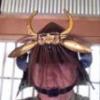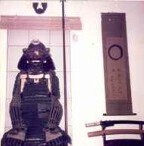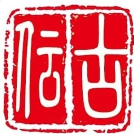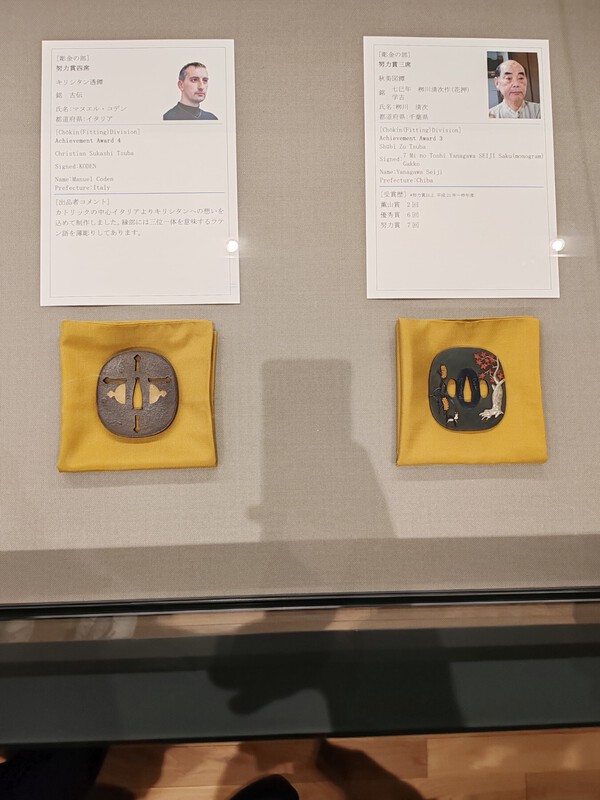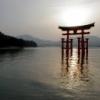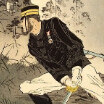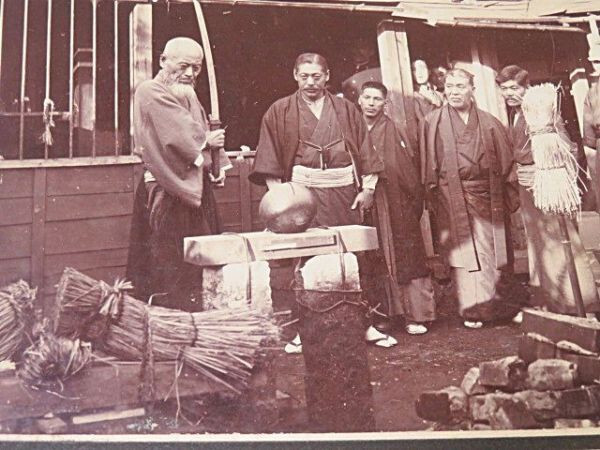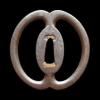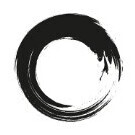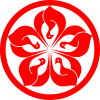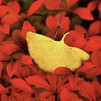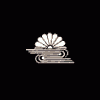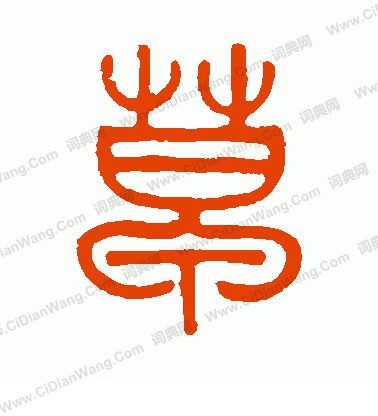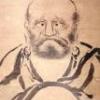Leaderboard
Popular Content
Showing content with the highest reputation since 08/01/2025 in Posts
-
A friend picked this up for me from Itoh-san at the San Fransisco Show. I originally saw it in Chicago in April and have been lusting after it ever since. I've previously purchased a piece by the 5th Master Shigenaga, but this is the first piece by an earlier Jingo smith that I have ever owned. Love the plate and the treatment of the iron. Was included in the 2013 NBTHK Kurogane no Hana exhibition, and has variously been attributed to the 2nd and 3rd Master. (Second by NBTHK and 3rd by Itoh-san.) Love the whole package and hope you all do as well. Hope you enjoy and thanks for looking!29 points
-
What follows is simply a different view on how and why to get into this collecting field. It is based on my experience and is purely my opinion. Just some random musings. 1.Before you dive in understand how the market is structured (it’s exactly the same as any other collecting market) Imagine a pyramid, wide at the base, pointed at the top. At the base there are a great many collectors interested in a wide range of swords for many different personal and aspirational reasons. These will usually be the more modestly priced swords but that does NOT MEAN THEY ARE CRAP. As you gradually look higher up the marketplace pyramid you will find the numerical customer base quickly reduces the higher you ascend and as the price of the swords increases. At the top of the pyramid you will find a vastly reduced customer base able (and willing) to spend large sums of money on the rarest of swords. This is pretty obvious stuff but the new collector should now start to think about where they might envisage themselves ending up. What are their aspirations (because they will vary enormously) What are they aiming for? Above all, what is realistic. 2. Ask yourself why are you joining this hobby? What do you want to collect because there is a great variety…..and remember it’s your decision, no-one should attempt to tell you what to do. This is your collection, your hobby. Military stuff? Just blades ….. Old swords, newer swords, modern swords? Complete swords (ie with koshirae that have not been cobbled together or made recently) Just long swords? just short swords? Just something to hang on the wall? How much money have I got that I can expose to risk. Do I want a varied collection or just one sword? Would I rather change my car? 3. Basic knowledge needed (can be gleaned from numerous books) How to spot a fake or replica How are swords actually forged, hardened and polished What flaws and problems in the blade will be encountered. How to recognise them and which are serious 4. Take a look at the marketplace in action…..sword prices in various sectors…auctions, dealers, forums, Japan, …..easily achieved on the internet. Within my target market what might fit within my budget. 5. Anyone around nearby that I can talk to….clubs, shows, dealers, internet forums. How do I network and build contacts? 1-5 above should have caused some forethought and most importantly a reality check and maybe the formulation of some sort of plan together with an understanding of the basics of swords. It need only take a few months not years. OK….. now what? Well a few facts to keep in mind….. It is unwise to buy swords for investment purposes. The higher the price generally the greater the risk. You will not buy an “important sword” for a few thousand but you can certainly buy acceptable quality and interesting examples (and don’t be misled by those that sneer and deride lower valued pieces) If buying from a dealer understand and respect that it is how he makes his living (or perhaps partially) and therefore he will have his profit built in. On very expensive swords that profit could be substantial. Many dealers are highly respectable and experts in their field. Some are not. Beware eBay and all similar auction sites. If a sword is available on the internet from a dealer in Japan it is usually because no one in Japan wants to buy it at that price. (Worth just thinking about that is) Always try to actually handle a sword before you buy it. At some point you might want to quit the hobby or raise or lower your sights. Be prepared to change. You will find out if this rabbit warren really is for you. Ultimately…..spend your money on what makes you happy and try not to make too many mistakes along the way (we all made mistakes, some more than others apparently🙂🙂🙂☹️) It’s a journey and an adventure, have some fun…..remember what you’ve decided and go buy something.22 points
-
I remember a REAL TOGISHI who visited Melbourne Australia maybe 40 years ago now. He was a sponsored visitor by an art dealer who specialised in Japanese art. This man had never been out of Japan, had never traveled on an aeroplane in his life and didn't speak English. His father was a togishi and his grandfather also, the latter being taught by a Hon'ami of the day. Our art dealer did the tedious task of all the back-and-forth translating. We, the gaijin audience, had many revelations during his short stay. As he was viewing a sword one comment that stuck with me is "They should all be restored". I'm sure many of us would agree with this as even the humble kazuuchimono is a survivor of centuries aided and abetted by the Japanese themselves. Such a sword is a stark contrast to the higher tier swords, to be sure, but we would do well to remember the times and not our highfalutin opinions. The trouble is, of course, the time required to learn how to properly and correctly polish a sword and the consequent high cost of gaining a knowledge entry point. This all conspires to consign centuries-old swords as junk, derisively called 'crappers', even by me!! However, I do remember "the wide-eyed, child-like enthusiasm which led us all here in the first place" as I pored through my newly bought copy of John Yumoto's "The Samurai Sword" trying to understand my newly acquired first sword, a Sue Kotou katana in a rather nice and good condition Shinguntou koshirae. Its long since gone to support the purchase of undeniably better (even to my eye!) Tokuho swords. I still have that wide-eyed, child-like enthusiasm and more of this on the Board would be nicer than wild-eyed jousting. Surely we are better than this... BaZZa.17 points
-
16 points
-
Got discharged today. They did some stuff, but some stuff they were reluctant to do because of the blood thinners and need to close some veins. So we are waiting it out to see if I decide to dump huge amounts of blood again. Sunday was scary...almost passed out and couldn't move my arms while I was showering to take myself to hospital. Ended up calling an ambulance. First time. Anyways, all ok for now, we'll see what happens. There are no indicators of anything specific causing it or anything very concerning. G&C scopes are clear...still dealing with the same abscess/fistula thing from the beginning of the year.15 points
-
I think it is necessary to distinguish between the intellectual/academic aspect of studying and the financial realities of collecting. Consider Rayhan's list, which I will paraphrase here: Suriage and/or mumei is okay in pre-Muromachi work and not afterwards. Buy swords in good polish. Make sure any koshirae fits. Buy swords and not papers, but consider papered blades first. Upgrade swords when you can. These rules are mostly about the financial aspect of collecting: bluntly, it is easier to re-sell a blade that meets these criteria. So now let us consider the intellectual/academic aspect. Suriage is less than desirable because it does two things: it changes the sugata and we lose material (both overall and potentially a mei). But if you wanted the "best" ko-Bizen, and you had your pick of every blade in existence, and price was absolutely no object — you would probably pick an ubu zaimei example. So really, from an academic perspective, suriage and mumei are NOT okay, REGARDLESS of the period. We want ubu zaimei. But here practical reality kicks in. We do not have the pick of every blade, we do not have infinite budget, and we have to make some compromises. People should buy the things they can afford and that they like. If someone wants to have a collection of kazu-uchimono, there is nothing intrinsically wrong with that. The problem is when there is a misunderstanding of the commercial realities of the market or a gap in scholarship. If someone thinks a kazu-uchimono is on par from an academic/historical perspective with a Gojo Kanenaga or Tomonari or whatnot, I think this is a failing of their education. But that doesn't mean their kazu-uchimono collection doesn't have a story to tell. You do not have to spend a lot of money to have developed meaningful understanding. I have more than a few things that I bought because I liked them, not because they were "important." But that doesn't mean that I can't understand the nature of what "important" means and why something the example I own is not going to command the highest prices in the market.14 points
-
Ray One or two comments from people from a certain country cannot equate to the entire country or be a representative sample. Indeed, you have contributed a lot to the study of swords in the U.K. and even here (eg, sharing all the scanned magazines and books!) and internationally (eg study sessions in Japan). You have trodden the tortuous path of collecting numerous swords from various sources (eg people could refer to your publication of your previous collection) and experienced first-hand numerous dealers and people in the community. You are trying to share some of your painful experiences so that others do not get burnt the way you did previously. Our To-Ken Society (which numbers 220 members by the way, not the 2-3 which are more vocal here) is grateful for what you have shared in terms of study material. The desire and ambition to educate is noble and yet the approach needs to be proportionate and appropriate. What might be pertinent for a certain member might not be suitable for another. We are all grown up here and can decide to heed advice or not. Unfortunately such is life - whether in politics, religion, business, hobbies etc. People sometimes listen/learn and sometimes choose to ignore what they are told. We as humans are all flawed like that. There are numerous valid tips you share above. In fact, I would say the advice you give is concordant with the straightforward “canon” in Japan. But emotion as well personal circumstances (and most importantly probably the lack of funds) might prevent people from following that archetype. The economic factor as well as impatience (covered elsewhere) often prevail. Please let us adhere to educating (or trying to). There are various lecturers and teachers here on this board (I know a few and they are prominent members of the board and the nihonto / armour / dealer community) and they can also attest: you can teach, explain etc but it is up to the individual student to wish to learn, follow recommendations etc.14 points
-
A large number of documents & photos purpotedly owned by the Meiji-Taisho era smith Hayama Enshin were recently listed in Japan. Of considerable interest are the photos of test cutting by Enshin and what appears to be Nakayama Hakudo. The documents would no doubt prove rather enlightening to researchers, though the ambitious prices may halt such endeavors. Details on sword forging: https://auctions.yahoo.co.jp/jp/auction/d1196774017 Kiyomaro lineage: https://auctions.yahoo.co.jp/jp/auction/1196757911 Test cutting: https://auctions.yahoo.co.jp/jp/auction/v119678193613 points
-
These may be some life lessons. 水ハ苦クシテ求メヨ – Make the water bitter and drink it. 人ト人間ノ差 – The difference between a man and a human The first part of this sentence is unclear. 波…ハ世ノ 常デ……………… 任セテ雑魚ハ 歌ヒ雑魚ハ オドル サレド 誰ガ知ロウ 百尺下ノ 水ノ心ヲ 水ノ深サヲ However, I know that this sentence is the last part of a novel “Miyamoto Musashi” written by Yoshikawa Eiji. The whole sentence must be like this. 波騒は世の常である 波に任せて泳ぎ上手に 雑魚は歌い 雑魚は踊る けれど誰が知ろう 百尺下の水の心を水の深さを - Waves and noises are the norm in the world. Let the waves go, swim well, the small fish sing, and the small fish dance. But who knows the heart and the depth of the water a hundred feet below.13 points
-
Dear all, A little grace and understanding goes a long way. When I first posted on NMB, years ago, I had purchased a mumei shinshinto blade, a humble beginning. I was greeted in the replies by Darcy who generously spent his time explaining attributions to me, he was graceful in his every words. He could have sneered and said it was a paperweight. After all, he was dealing in Koto masterpieces. There was nothing for him in this sword to appreciate. But he wasn’t dismissive - instead, he saw rightly that this was an entry into the world of Nihonto. Over the years, I came to the conclusion that there is truly no point in lecturing on what “ought to be collected” - the reality is set by the market participants, there is no central planning committee that sets prices. It is all supply and demand. What matters is honesty. Honest description of the items, genuine effort to depict reality as it is. Markets require information to function correctly. Whatever the level one collects at, there is always a bigger fish who - in comparison - will make one’s entire collection fit into the “paperweight” category. Tokubetsu Juyo grandmaster sword? Well, there is a Jubun one that is longer, with a more complete nakago, and a single mekugi ana that belonged to the Emperor. The Jubun collectors can look down on the Tokuju collectors. The Tokuju collectors can look down on the Juyo collectors, and the Juyo collectors can take it out on the Hozon collectors, and so on. Trivially true statement. But there is no point to it. Live and let live, learn and respect others, fight for truth, and don’t fall for delusions. Best, Hoshi12 points
-
Howdy ya'll, If you ever need moderation assistance; such as with double posts, minor edits, or moving threads. Please feel free to tag me using @Scogg. When you start typing the @ symbol followed by my name, a dropdown should appear for you to select me. This sends me a direct notification and helps me respond more quickly. As long as it's aligned with the forum rules, I'm more than happy to assist. I check the forum regularly throughout the day, but tagging me ensures I can address your needs sooner. I'm here to help and want to do what I can to support the community and give Brian as much of a break as possible during his recovery. Feel free to reach out with any questions, All the best, -Sam12 points
-
So let's get to it First of all, my compliments to everyone who publicly presented their estimate and opinion I can only hope that no one was influenced by the file name for sugata (fixed in the meantime) Mea culpa It's easy to define what to focus on if one knows the answer Nevertheless, I'll try First of all, it's sugata Here is a composition of this blade with blades of the schools that appeared in the posts From the left, the blade in kantei/ Gotoba/ Ko-Ichimonji/ Yoshifusa/ Hatakeda Moriie ( Shodai ) All blades have approximately the same sugata and are ubu The monouchi area at the blade in kantei is losing sori (we can see the same at the Gotoba blade) That should point us to the Heian/very early Kamakura period Just like the Jifu utsuri in the photo of sugata The preserved funbari from the photo of sugata and from photo 2 should be evidence that the blade is ubu Nakago-jiri: very unusual for the school to which the blade is attributed Most likely the shape of the nakago-jiri changed shortly after the blade was made, as the patina shows no differences compared to the surrounding surface Also according to the hi in the nakago it is clear that the nakago originally had larger sori (widening of the groove where the nakago was straightened) The Jigane is not quite what we would expect from a Ko-Hoki It does not seem rustic at first glance and is rather a tight itame with mokume with a lot of ji-nie and chikei (I hope it is clearly visible in photo 5 and 6) Nioiguchi is hardened in nie (photo 1, 5, 10) with tobiyaki, which form a kind of nijuba (photo 4, 10 on the right) And finally the Boshi, which clearly tending with much hakikake to kaen ( does not occur in the Bizen school - I do not exclude that there is an exception ) Cleary see from the photo and also from the oshigata The blade is attributed to the Ko-Hoki school with a direct attribution to Yasutsuna You can find a gallery for this blade here https://eu.zonerama.com/Nihonto/Album/13418224 Congratulations to everyone who got Atari12 points
-
Hello everyone, Okan Asik here. I'm based in Dubai and specialize in authentic Japanese swords and fittings, which I source directly and exclusively from Japan. Some of you may already know me and my story. My interest in Japanese swords began many years ago as a collector and researcher. After moving to Dubai a few years ago, I decided to go full-time and build my life around Nihonto. Since Japan doesn’t ship swords directly to the UAE, I personally travel to pick up each piece. For me, this isn’t just business; it’s about placing these works of art in the hands of those who will truly appreciate and take care of them. I look forward to sharing items with you all on the forum. Warm regards, Okan PS: My website will be up in a few months(hopefully), but in the meantime I’m going to share items and updates on social media so please follow! facebook.com/ginzamaru.dubai11 points
-
Thank you for your calm and thoughtful perspective, Hoshi. I'd like to remind everyone that Brian is still dealing with ongoing health issues. Part of the reason I’ve been made moderator is to help ease his load during this time where he is distracted by serious real life challenges. When discussions turn uncivil or overly contentious, it undermines those efforts and risks adding unnecessary stress to someone who is already going through a lot. Out of respect for Brian, the forum, myself, and maybe most importantly: for one another. I’m asking everyone to please be mindful of their tone, exercise patience, and prioritize civility in their interactions. This is now the third or fourth thread that’s begun to spiral, and I’d really prefer not to lock another one. I trust that as a group of adults, we’re capable of letting some things go, at least for now. In support of Brian and the forum. Sincerely, -Sam11 points
-
I'll try again, because the last few posts completely missed the point. As a complete beginner, I would think: what's going on here? The problem is that many “old hands” seem to have forgotten their own beginnings. And I can only speak for myself: the problem wasn't the swords I bought when I was starting out. The problem was that I got five different opinions from five “old hands.” Doesn't anyone remember the feeling of going to someone who obviously knew what they were talking about and anxiously awaiting their judgment? And that's because - you were hardly able to assess the quality of your new acquisition yourself, - and you were just as unable to gauge the quality of the judgments. A negative judgment could destroy everything in seconds and effectively render a promising new acquisition worthless to you. Even in my early days at the NBTHK-EB, I observed how members or guests would quietly and secretly take an object to Micha Hagenbusch. Then there were two options: either they would return just as quietly and secretly with a grim expression on their faces and let the piece disappear into their bags. Or they would proudly carry it in front of them and others would then be “allowed” to admire it too. And I experienced the same thing! An old friend warned me during my first participation (I don't know) 25 years ago(?) to take certain blades with me. Instead, he recommended that I take a katana with me that - dated from the Kanbun period, - was suriage but still bore his signature, - had already lost some of its material, - and had no paper. In other words, the worst possible choice imaginable. However, the katana had an en suite koshirae with decorative fittings made of solid silver, typical of the late Edo period. So I tried to focus my questions on the mounting. But Micha Hagenbusch was not interested in the mounting at all. He pulled out the blade, took a quick look at it, removed the tsuka in a matter of seconds, and asked me several times, “...what do you have against the blade, what do you have against the blade??” Very quickly, we were surrounded by curious onlookers, and I was extremely embarrassed! I couldn't come up with a reasonable answer, not with my level of knowledge at the time. But it was a key experience that made me swear to myself that I had to change something! That I had to get to the point where I could form my own useful opinion. The opportunity to see good blades at the meetings was one of the important steps. Incidentally, I already had quite a few books before that. But I often imagined that what I found in the books looked exactly like what I thought I saw on my blades. But it was only when I started studying real blades that I realized there was a world of difference between what I was holding in my hand and what I had at home. That's why books are certainly useful, and they are the best support for the real study of blades in your hand. But they cannot replace practice. And part of practice is having someone experienced to stand by your side. Otherwise, you just stare at the blade like an autistic person. You see a lot and yet nothing. You have to be able to name what you see, but also what you don't see, otherwise you can't be corrected, etc... That was a fundamental insight, and yet many years of learning followed. And it continues to this day. I have no idea what my opinion will be in 10 years. But that's just my story, which I can tell a newcomer here. And a newcomer can draw conclusions from it. But they MUST take the initiative and ask questions. They must also be prepared to “let their guard down.” There's no shame in being completely wrong about a kantei. Micha Hagenbusch always tried to understand why someone gave a certain wrong opinion. And I learned a lot from his corrections. Unfortunately, this type of Kantei was not very popular. Many wanted to know in advance what to expect so they could prepare themselves accordingly. Which is understandable. There are many ways! For me, knowledge is still the most important thing. Acquiring a particular piece is more of a logical side effect. The only problem is that I find it incredibly difficult to acquire anything the longer I continue on my path. That's why owning things is no longer a priority for me. But luckily, not everyone thinks that way, because that would be a real disaster for me! As I said, there are many paths!11 points
-
The Nihonto community is a funny thing, on the one hand, we emphasize that we collect "art swords", but in the next breath we're told to accept a previously established order of what's best. It seems the beholder isn't able to choose. So then, rather than quality being subjective, it becomes objective - but all the objective qualities usually relate to utilitarian aspects, which we reject as unimportant to art swords, so the rationale offered only really boils down to a circular "someone else before said so" argument. 🙂 For me, buy what you like, pay what you're prepared to, and don't let other people spoil your enjoyment with their opinion.11 points
-
Dear all. I have recently acquire a nice Heianjo Zogan tsuba. It is not a masterpiece but it is a nice one ansyway. The design is not the usual karakusa with trellis that. There are those bell shaped pieces that are somehow reminiscent of the koto string bridges. Any help in the identification of the theme is welcome. Best Regards Luca11 points
-
Hi, Priorities changed over the eras. Shortening during the turbulent Muromachi times were motivated by having the best, most functionally advanced sword by your side. It was life and death, no time for nonsense. It wasn’t seen as disrespect for Grandpa’s heirloom - the opposite in fact, it was given a new life to do what it was supposed to do: battlefield duty to protect grandpa’s family lineage. Oda Nobunaga was a serial O-suriage enjoyer and big collector. He wanted the option to use it. Only the curious dreams of the Uesugi Daimyo somehow led to a family-wide proscription on chopping up heirloom nakago. Later you see more refined approaches. Gakumei, Orikashi Mei, Kinzogan Mei, and so on and so forth. They are the fruits of a time where life and death battle royal wasn’t the only grand imperative. And again, it was seen as a sign of respect to the sword to be able to wear it in court. Remember that a Kinzogan Mei by the Ko-Hon’ami was seen as equivalent to a signed sword. You still have this attitude in Japan, where a Kochu Kinzogan or Origami is often said to be equivalent to a signed sword by old collectors. Gakumei were also susceptible to forgeries. You can always transplant a mei from a burned Norishige on your Ko-Uda, and make shenanigans. The alternative is the shenanigan-proof Orikashi mei. But It came later. it was also carried out outside of Hon’ami/Umetada shogunal institutions. And sometimes Mei were messed with for strategic reasons. At some point it became very risky to own a signed blade from a grandmaster for a small, or even large clan. There was always a bigger dog that would gently ask you to part way with the sword in a way you couldn’t refuse. Gakumei swords, swords with defaced mei (filed, chopped midway, half erased by the bohi extension…) - these were protected as they were considered less appropriate for gift giving. The Satake clan is noteworthy for having filed, defaced, extended bohi etc on all their family top swords. They probably got badly burned at some point and took drastic action. There are a lot of social circumstances surrounding nakago condition, and it is quite a fascinating topic. Personally I find Gakumei, Orikashi Mei, ko-Kinzogan, defaced Mei, and partial Mei swords wonderful. They tell the story of their times. Best, Hoshi11 points
-
72 plate heavy Kabuto Edo period Thought to be Ichiguchi Myochin work Not sure if signed Would be interested in comments , the Tehen is a bit further back than normal and there is a noticeable bulge at the front. It's an usual number of plates. A period Mai Date. Many thanks to Nick Ricupero for selling this to me.11 points
-
I posted this elsewhere and think NMB would enjoy it too. Attached are 3 kozuka of same design -Taira Tadanori death waka on an arrow (under cherry tree)-. First to the right is Goto Tokujo. Middle one is his son Kenjo. The last one on the left in its own box is either later Goto main line or Goto sideline (my opinion). ----- Purpose of this is to see second photo where you can observe the design went from thinner but more intricate to progressively deeper larger relief and design. Some of the complexity lost…10 points
-
For me, the journey started rather typical (for this day and age). I started out just reading and browsing the forum for a long time, trying to learn as much as I could. Then I came to the realization there's really no way to skip the book learning. So I bought Connoisseurs and read that several times. Next I picked up Markus' Japanese Sword Smith Index. I spent a lot of time looking at dealer offerings online and cross checking it with Connoisseurs and the Index. From the onset I had the Nanboku-cho period in mind because I love the sugata, and that particular and relatively short moment in history. I began looking at and reaeaching the top Soshu masters basically because of the reputation of being the pinnacle. I liked Kaneuji and Norishige the most, however getting close to the master's work at my set price range was not gojng to be very realistic. Kaneuji's history was particularly investing to me, so I started looking into Naoe Shizu as a sort of way to get Nanboku-cho Soshu at Mino prices. (Rember I'm a newbie). I liked the examples of Naoe Shizu I could find, and what really sold it was my picking up the Soshu Den Masterpieces book. The description there of Naoe Shizu being a quality blade that was sought after by actual warriors really did speak to me. Ive been through some s**t in my 15 years in law enforcement, and when I look at that work, it feels deadly but beautiful. I don't know if that's a good reason or not10 points
-
Sold a fairly average civilian mounted Gendaito that I adored because it had some really interesting activity. 10 Years later when my friend retired and sold his collection of knives, I bought it back. It's here with me again.10 points
-
I'm 77 next month, and started collecting in 1973. I stopped in 1981 and sold my collection as I had joined the West Australian Museum and did not feel I should collect. I started collecting again in 2008 when I left the museum - but this time only gendaito 1876 - 1945. I first became interested in Japan / Japanese swords as one uncle had spent 4 years 1945-1949 in the Occupation of Japan (in Hiroshima) and another uncle had brought back a sword from a surrender his Australian Army unit took in New Guinea (it is a gendaito of good quality but mumei - Type 98 mounts).. i was therefore always interested in Japan and studied Japanese history and language at Uni...and here I am, on a Japan oriented site - love it.10 points
-
10 points
-
Also remember that not everyone is a blade collector. Many are sword collectors ie the whole package together with untouched koshirae. Not everyone is an elitist blade hunter. If that is your “thing” - fine but don’t assume others even want to follow the same path. The sword collector most likely has a whole different set of objectives and tolerances which could easily mean accepting an unimportant blade or one in poor condition in return for some nice fittings. It has already been said above I’m sure but judging what others enjoy collecting based on your own views is irrelevant10 points
-
If you save $2000, ‘someone’ will tell you, “you should have waited and saved $5000.” If you save $5000, ‘someone’ will tell you, “you should have waited and saved $10,000.” If you save $10,000, ‘someone’ will tell you, “you should have waited and saved $20,000.” If you save $20,000, ‘someone’ will tell you, “you should have waited and saved $100,000.” Collect the way you want to collect. You do you. While graciously accepting advice is noble, there will always be people who love to tell you what to do with your money, what you should or shouldn’t buy, and why you messed up buying what you bought. That is always the easy part. Studying and knowing what you like, being happy with your purchases, and collecting for yourself vs others is a little harder. Is it more important that you are happy, or impressing others? Who are we buying these blades for?10 points
-
Here is the beginning layout out of the Aoe display at the SF show, prior to the actual hands-on viewing. There were 6 daito, 1 wakizashi, and 2 tanto. The sword committee seriously underestimated the attraction of the display. More than 100 people attended over 2 hours, 50 handouts disappeared early and so did other supplies. Kudos to the NBTHK-AB and the NCJSC.10 points
-
9 points
-
Considering the emphasis that is now being put by @Jacques on a single chisel stroke, it might be pertinent to refer to @Markus's highly interesting article on comments and observations made by one of the fathers of modern sword study, Dr. Honma Junji. https://markussesko.com/2021/06/08/honmas-questions-1/ Most specifically, this quote.9 points
-
The discussion is good and there are several good views. There is nothing really wrong in suriage Shintō swords. However I think you must understand how much value you will put on the item. For some smiths you can find hundreds of signed blades and suriage blades are unfortunately not on top of the list. Then you need to weigh long swords, short swords, possible polearms etc. It is actually quite confusing for people starting out. I am fairly long time member of NBTHK but my interests in swords do not really align with the interests of the organization. I like stuff that they don't appreciate that much and for me it is ok. I know what I like and to me it feels good but I wouldn't recommend going so far out of the "norm" for anyone. I do think the traditional sword appreciation is bit hierachical you are supposed to like certain things because it is traditionally accepted. I think the "mainstream" collecting is safest and in general the best option. Also I feel that when the talking goes to Jūyō swords and what is acceptable and not, then it gets to actually bit advanced stuff and I think new collectors maybe shouldn't be too stressed about that stuff in the beginning. Jūyō stuff is actually very complicated in my opinion and I believe I am not the only one. Sometimes it is very puzzling. For example in the session with 3 Tomomitsu passes at Tokubetsu Jūyō, one of them was historical Masamune of Yasukuni jinja. Now NBTHK attributed the sword as Tomomitsu and it went through their whole system and finally at the top TJ. Last 2 years it was not on display at Yasukuni jinja because it was in the NBTHK process but I finally got to see it this summer. Yasukuni jinja displays it as Masamune as it has historically been, I feel they disregard NBTHK opinion on this. Now is it Masamune or Tomomitsu I cannot say but I feel in overall quality the sword is not super nice, however it has very large historical value.9 points
-
There's some truth in that, but to draw from an analogy, consider the car collecting world. There are some, only interested in rare Ferraris, spending millions, and wouldn't even glance at say, a classic Japanese car. For me, I appreciate a Ferrari 250 GTO, and a Mitsubishi GTO, with approximately the same level of interest. I wouldn't buy the Ferrari, because it's well outside of my price range. My argument is, if you're interest isn't wider, perhaps a classic Mini, Lancia Stratos, MGB, Bugatti Veyron, Lotus Elan etc. you're not really a car guy, you'd be well, a snob. That's not saying you have to like everything, but (as with Nihonto), there's different styles, eras, workmanship, showmanship, utility, technology, state of preservation and fame / prestige and ultimately, monetary value. In both fields of collecting, people are well aware of the wallets required to collect in the different areas, but the disparaging/dismissive remarks I often see on this forum sometimes only serves to spoil someone's enjoyment of where they've chosen to collect. Personally, I'm fortunate enough that Juyo blades are attainable - many can't afford that, many can afford much more. But whether you show me your Gunto or Sadamune, I appreciate them for what they are and enjoy people's knowledge and enthusiasm about their collections - and don't need any put downs.9 points
-
I think Rayhans advice that has been discussed is very good for high level sword collecting. Some wording he has used might be bit provocative and ticking people off. However the issue might be that there are different levels of collecting. To me it has seemed in recent threads that it is difficult for people of varying collecting levels see eye to eye. What is seen as a no go in high level collecting could be perfectly accessible sword in lower level of collecting. For a brain teaser people can think 15 Kongōbyōe swords vs. Mumei Tokubetsu Jūyō Rai Kunitoshi. I know high level collectors would pick the TJ Rai Kunitoshi and I would choose 15 Kongōbyōe, it is just a matter what you feel is correct to your personal collection. Life would be boring if everyone would just want to buy the same swords.9 points
-
This is a good point, would it have come to where I am now if not for the 100? When i finally started working and earning i set out at first on a path of accumulating as many Nihonto from all the roads. As you know in Nihonto we speak of the roads like Tosando, Tokaido, Sanindo, etc and I thought i could master the Nihonto if I saw a single sword from each kaji along these roads, that became a mammoth task and I eneded up with a very flawed collection because each road or even each of the Gokaden is spread across a millenia and have different representatives. Then I decided to focus on certain districs within the gokaden but to do it for each district across their respective lineages. So you can imagine again a huge task and one that saw me buying single swords from Kamakura period to Shinshinto for Bizen for example. It is at this point I met a group of collectors who helped me understand that im all over the place. Without direction and study and focus I would not achieve what I had originally wanted. They explained that take Hizen, the Kaji in Hizen did everything from Soshu to Hizen hada to Masame, etc but their roots lay in the Heian and Kamakura periods. They asked what do you really want to know about Hizen that studying the original kamakura kaji cannot teach? And this was true of course. They introduced me to study and to observation on swords I would not be able to afford at the time because I had exhausted my budget. Until I had settled on what I wanted to study then they helped me to understand how to whittle down my collection. I could see by then that I had spent a decade plus collection only what I could get my hands on and not what was really representatives from the various schools, I was doing a means to an end style of accumulating and not collecting. Having a community can really save people in this jungle of Nihonto. There is a reason a society is led by senior members vs inexperienced. The swords I have today are still from that original batch, much less but they are the ones that fall into my road, the road I want to discover in Nihonto. And having streamlined im very content reading and learning and letting myself come to blades that fit my path rather than just accumulating or filling a slot. The collection also includes swords from more recent purchases that again fall into my road. I can say at one point I had 15 Kongo Hyoe swords from the inception of the school to its demise many centuries later but it is such a small representation of their work and very ignorant of me to have thought I was doing justice to them as a school. By whittling down the collection i also got to understand what was quality, by going to study sessions with people who had excellent pieces who also studied swords we could never hope to own, we get closer to our hearts content. We begin to see. I was shown a Masamune and TJuyo Chogi back to back as an example and those are moments you get to really study and memorise what you're looking at. Will I ever own one, no, would i have been able if I hadn't spent unwisely, maybe and it would be a single sword collection and I would be content. So, the craziness of accumulating led me to waste money. Would I have been here if not for that, i think if I had listened very early on to the people screaming at me to focus and study first, yes I would be here inevitably. You must understand that selling of the 100 was basically hitting a complete reset button. I started from scratch. My only wish for new collectors is, don't waste by rushing. Study and see and then buy whatever you like after you know your feet are firmly on the path you want to walk. Don't get duped by dealers of low end items. Respect yourself and your intelligence and your hard earned income and buy quality, it will serve you well in the future if you need to sell. Will there be mistakes along the way, yes, but they should not be the kind that makes you reset 10 plus years of hard work and studious love of Nihonto, that is a very arduous and painful path.9 points
-
I am NOT going to allow this to be a discussion about the intention or person behind the advise here. Anyone who takes it there better gtfo out this thread, or take a break. I've had enough of people gunning for others, without adding zero to the study of Nihonto. Either you decide to take the advice (or parts of it) or you don't. In which case you ignore this thread and read others. Anyone posting personal attacks here WILL take a break. The advice is solid. Whether you choose to follow it or not, depends on how you collect. But since it's the same advice given in some major Nihonto books..are you arguing against that too? I don't care if you follow this advice or not. Myself?...I don't. I am ok where I collect, and know at what level I collect. But while I myself don't adhere to that advice, I am grown up enough to read it and appreciate where it comes from and not take it personally. If I can do that, you guys can too. So either politely discuss, or ignore this thread. I'm in too much pain to let this stuff add to my stress. Take the above seriously, I don't have time to babysit.9 points
-
9 points
-
Things have changed ……inevitably. I come from over 40 years ago. No internet, no computers, no mobile phones, very few books, no contact with Japan….starting from scratch armed with enthusiasm and a modest budget. I experienced the treasure hunts. Building contacts by word of mouth, adverts in papers followed by days spent responding, visiting the local weapons dealer to see if anything had turned up. Phone calls from strangers (some very strange) I’ve bought many swords from sheds, garages, country houses, local auctions (if Peter Yorke hadn’t found out about it) I’ve driven 400 miles to see a newly discovered dealer (Chris Shewen) but having arrived an hour early being told by his wife that he was asleep on the couch and I’d have to wait! Fellow enthusiasts driving down from Scotland because they had heard I was interested in Japanese swords. Can’t remember much about those encounters…they brought this rather potent liquid with them. A bundle of swords arriving in the post….one looked nice…turned out to be a Heian period blade in untouched Efu no Tachi mounts that made a bomb through Sothebys years later. Being brave and going to a Token Society meeting in London …..the less said the better. Going to see Mike Deann London (a dealer) ….did I want o sell them….no….then I really need to charge you for valuations… Virtually no swords in shirasaya. All in original koshirae from gunto to stunning Goto mounted daisho. Some rusty, some good but old school polish …..etc etc etc We learned things the hard way and slowly. That excitement has largely gone and will never return. IMO the hobby has become sterile….we were “sword collectors”, now it seems to be more “blade buyers” dependent more on your budget. Lots of shiny things in shirasaya with modern polish and papers. Ok if that’s your thing…fine. There are those that sneer at us early birds sadly….but they will never ever enjoy what we enjoyed.9 points
-
I have every confidence in Sam's decisions. He made the right choice. I opened it again for people to have their last say so that no-one blames Sam. Then I can lock it again like I am going to do to this one, and then people can blame me. Enough of this bullshit.9 points
-
I have owned this sumptuous wakizashi twice and each time got tempted by bigger and bigger offers when I really didn’t need to. Last seen going through Sothebys I think. Truly beautiful and extremely high quality koshirae on a mint Kanefusa hirazukuri blade. By far the most luxuriously mounted sword I’ve ever owned. In perfect condition. I still kick myself. Anyone know where it is?9 points
-
9 points
-
I was inspired to post this article (from the January 1980 Issue of The Bujin) by the "with a little help from my friends" thread in the translation forum. I agree with the Kanezumi translation. I have found this useful over the years. With grateful thanks to Lovret Sensei. I don't think he would mind my posting it.9 points
-
9 points
-
Hoshi: I'll echo your humble beginning. My first posted sword elicited a fair amount of banter, eventually being labeled "a turd" by one of the long-time folks. It was a little disheartening, however I still like the sword because it has some unique and not-often seen features. Not bad for a "turd." John C.8 points
-
Sometimes, an abundance of information is a double edged sword (no pun intended). In the 1950s and 1960s, when returning servicemen or their families started parting with their souvenir swords, they let them go for peanuts and even the junk shops who bought them often did so only for their scrap metal value. Ron Gregory once told me about visiting a man who had responded to his advert asking about Japanese swords. As he approached the man's front garden, he could see a makeshift picket fence made out of rusting blades, stuck point down in the earth with wire running through the mekugi ana. According to Ron, many of them were old blades but the dealer had stripped them of their brass, gunto fittings as the metal was worth more than the intact swords. For Ron, even with his already burgeoning knowledge about what was 'good' or 'bad', he would delight in finding a Muromachi Jidai katana signed "Bishu ju Osafune Sukesada" because of the sheer history it represented, having survived a civil war (when it was probably expected to be destroyed in battle) and a later global conflict. Nowadays however, that same Sukesada would be derided (certainly on this forum) for being a mere 'Kazu-uchi-mono" (数打ち物) and not worthy of serious consideration - even though it was constructed on a par with, or better than, most European swords of the same time period. (I wait to be - inevitably - corrected on that last point.) So, a newcomer to the hobby now thinks "Kazu-uchi-mono are junk because the 'experts' say so - I've got to aim higher or it's not a 'real' samurai sword". The irony here, of course, is that the Sukesada is far more of a samurai sword than some 'toy poodle' of a wakizashi with all Goto mounts made for a Yoshiwara frequenting merchant of the 18th Century. The point I'm trying to make is that age and history have definitely taken a backseat to maker and condition. I'm sure that many of you - when you first started collecting all those decades ago - felt a raw thrill of excitement at handling a a weapon which had first been wielded on a battlefield five or six centuries before. The sheer sense of history in that piece of metal overcame all blemishes, chips or flaws; it was a direct conduit to the past. Someone, at sometime, had handled that same object and knew that it represented life or death for them - it was literally an extension of their very psyche as a warrior. Now however, a beginner would buy that self same Sukesada, post it excitedly on this forum or similar - and have it picked apart, negative point by negative point, because it wasn't a "Yosōzaemon no jō Sukesada" (which they would probably never be able to afford). No wonder they give up, disheartened and sell it on. Sadly, I hear the learned appreciation of fine art critics from the 'experts' and 'connoisseurs' in this field, but none of the wide-eyed, child-like enthusiasm which led us all here in the first place.8 points
-
8 points
-
寺島博愛 – Terashima Hakuai The 3rd kanji is not 傳 (den), but 博 (haku). I guess that he might be this Terashima Hakuai. Taisho 13th year, Joined Nippon Yusen. Showa 18th year, Captain Showa 20th year, Manager of Marine Department Showa 23rd year, Chief Manager of Marine Department Showa 27th year, Associate Director Showa 29th year, Counselor He is the author of 海難の処置と処理 (Measures and management of marine accidents) published in 1960.8 points
-
8 points
-
Dave, Time is your friend. You don’t have to rush this: your sword money will still be in the bank when you know enough to make a more informed decision.8 points
-
I am going to say rather than trying to cram for this like a test, you could hire an expert for the day. There are ex-pats (experts) who are currently living in Japan that specialize in this field. Someone like Paul Martin or better yet Robert Hughes who is on this board could I am sure act as a guide for a day at a small fee, take you to sword shops, help you negotiate deals, help you recognize quality and later handle export procedures. This way you can travel with confidence and avoid a feeling of being lost or unable to communicate thus ensuring a happier experience... -t8 points
-
8 points
-
Not the place for it, but I am sure everyone joins me in wishing you well8 points
This leaderboard is set to Johannesburg/GMT+02:00


